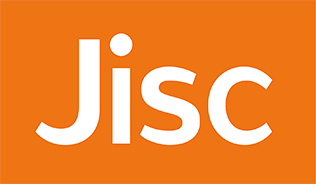Hardship Financing in Healthcare among Rural Residents in the Gaibandha District: An Application of Binary Logistic Regression
DOI:
https://doi.org/10.54536/ajebi.v4i2.5387Keywords:
Bangladesh, Binary Logistic Regression, Gaibandha District, Hardship Financing, Out-of-PocketAbstract
High out-of-pocket expenditures lead to financial hardship in the absence of health insurance coverage, which is prevalent in low- and middle-income countries, including Bangladesh. Households often incur “hardship financing” when they face additional losses by borrowing from a bank, microfinance, or moneylender (with interest) and selling assets, which was 31.4% of 516 sampled respondents in the rural areas of the Gaibandha district in Bangladesh, selected as the study area. In contrast, financing in healthcare by current income or savings, and borrowing from relatives or friends (without interest), is termed “no hardship financing”, which was 68.6%. To investigate the factors affecting the risk of “hardship financing” as the outcome variable with “Yes or No” category, a binary logistic regression was applied, including six independent variables that made statistically significant contributions to the model, such as age, education, family size, the distance to the hospital, outpatient expenditures, and chronic illness. Subsidized healthcare services or health insurance schemes, and accessing to a wealthier social network were suggested, which may protect against the risk of hardship financing. Besides, establishing more healthcare facilities in remote areas with assured quality has been emphasized. Hence, to achieve universal health coverage, policymakers should consider the significant factors associated with hardship financing.
Downloads
References
Asfaw, A., Lamanna, F., & Klasen, S. (2010). Gender gap in parents’ financing strategy for hospitalization of their children: Evidence from India. Health Economics, 19(3), 265–279. https://doi.org/10.1002/hec.1468
Ahmed, S., Hoque, M. E., Sarker, A. R., Sultana, M., Islam, Z., Gazi, R., & Khan, J. A. M. (2016). Willingness-to-pay for community-based health insurance among informal workers in urban Bangladesh. PLOS ONE, 11(2), e0148211. https://doi.org/10.1371/journal.pone.0148211
Binnendijk, E., Koren, R., & Dror, D. M. (2012). Hardship financing of healthcare among rural poor in Orissa, India. BMC Health Services Research, 12, 23.
Chuma, J., Gilson, L., & Molyneux, C. (2007). Treatment-seeking behaviour, cost burdens and coping strategies among rural and urban households in Coastal Kenya: An equity analysis. Tropical Medicine & International Health, 12(5), 673–686. https://doi.org/10.1111/j.1365-3156.2007.01825.x
Ezeoke, O. P., Onwujekwe, O. E., & Uzochukwu, B. S. (2012). Towards universal coverage: Examining costs of illness, payment, and coping strategies to different population groups in Southeast Nigeria. American Journal of Tropical Medicine and Hygiene, 86(1), 52–57. https://doi.org/10.4269/ajtmh.2012.10-0660
Hosmer, D. W., & Lemeshow, S. (2000). Applied logistic regression (2nd ed.). John Wiley & Sons.
Park, H.-A. (2013). An introduction to logistic regression: From basic concepts to interpretation with particular attention to nursing domain. Journal of Korean Academy of Nursing, 43(2), 154–164. https://doi.org/10.4040/jkan.2013.43.2.154
Hair, J. F., Black, W. C., Babin, B. J., & Anderson, R. E. (2010). Multivariate data analysis (7th ed.). Pearson Prentice Hall.
Islam, M. R., Rahman, M. S., Islam, Z., Zhang, B. C., Sultana, P., & Rahman, M. M. (2017). Inequalities in financial risk protection in Bangladesh: An assessment of universal health coverage. International Journal for Equity in Health, 16, 59. https://doi.org/10.1186/s12939-017-0556-4
Jahan, T. (2022). The importance of attribution of primary health care services for community-based health facility according to the health service users in Kapasia, Gazipur. Journal of Scientific and Technological Research, 4(1).
Kolesar, R.J., Erreygers, G., & Leng, S. (2023). Hardship financing, productivity loss, and the economic cost of illness and injury in Combodia. International Journal for Equity in Health, 22, 208
Kruk, M. E., Goldmann, E., & Galea, S. (2009). Borrowing and selling to pay for health care in low- and middle-income countries. Health Affairs (Millwood), 28(4), 1056–1066. https://doi.org/10.1377/hlthaff.28.4.1056
Leive, A., & Xu, K. (2008). Coping with out-of-pocket health payments: Empirical evidence from 15 African countries. Bulletin of the World Health Organization, 86, 849–856.
McIntyre, D., Thiede, M., Dahlgren, G., & Whitehead, M. (2006). What are the economic consequences for households of illness and of paying for health care in low- and middle-income country contexts? Social Science & Medicine, 62(4), 858–865.
Peng, C. Y. J., Lee, K. L., & Ingersoll, G. M. (2002). An introduction to logistic regression analysis and reporting. The Journal of Educational Research, 96(1), 3–15.
Peduzzi, P., Concato, J., Kemper, E., Holford, T. R., & Feinstein, A. R. (1996). A simulation study of the number of events per variable in logistic regression analysis. Journal of Clinical Epidemiology, 49(12), 1373–1379.
Russell, S. (2004). The economic burden of illness for households in developing countries: A review of studies focusing on malaria, tuberculosis, and human immunodeficiency virus/acquired immunodeficiency syndrome. American Journal of Tropical Medicine and Hygiene, 71(2), 147–155.
Smith, P. C., Mossialos, E., Papanicolas, I., & Leatherman, S. (Eds.). (2009). Performance measurement for health system improvement: Experiences, challenges and prospects. Cambridge University Press.
Steinhardt, L. C., Waters, H., Rao, K. D., Naeem, A. J., Hansen, P., & Peters, D. H. (2009). The effect of wealth status on care seeking and health expenditures in Afghanistan. Health Policy and Planning, 24(1), 1–17.
Senaviratna, N. A. M. R., & Cooray, T. M. J. A. (2019). Diagnosing multicollinearity of logistic regression model. Asian Journal of Probability and Statistics, 5(2), 1–9.
Tahsina, T., Ali, N. B., Siddique, M. A. B., Ahmed, S., Rahman, M., Islam, S., Rahman, M. M., Amena, B., Hoque, D. M. E., Huda, T. M., & Arifeen, S. E. (2018). Determinants of hardship financing in coping with out-of-pocket payment for care seeking of under-five children in selected rural areas of Bangladesh. PLOS ONE, 13(5), e0196237. https://doi.org/10.1371/journal.pone.0196237
Tadiwos, Y. B., Kassahun, M. M., & Mebratie, A. D. (2025). Catastrophic and impoverishing out-of-pocket health expenditure in Ethiopia: Evidence from the Ethiopia Socioeconomic Survey. Health Economics Review, 15, 15. https://doi.org/10.1186/s13561-025-00602-1
United Nations Development Programme. (2019). Universal health coverage: Sustainable development – Issue brief. https://www.undp.org/publications/universal-health-coverage-sustainable-development-issue-brief
Vakhitova, Z. I., & Alston-Knox, C. L. (2018). Non-significant p-values? Strategies to understand and better determine the importance of effects and interactions in logistic regression. PLOS ONE, 13(11), e0205076. https://doi.org/10.1371/journal.pone.0205076
Van Doorslaer, E., O’Donnell, O., Rannan-Eliya, R. P., Somanathan, A., Adhikari, S. R., & Garg, C. C. (2006). Effect of payments for health care on poverty estimates in 11 countries in Asia: An analysis of household survey data. The Lancet, 368(9544), 1357–1364.
Downloads
Published
How to Cite
Issue
Section
License
Copyright (c) 2025 Most. Sabiha Sultana, Md. Shawkat Ali

This work is licensed under a Creative Commons Attribution 4.0 International License.














